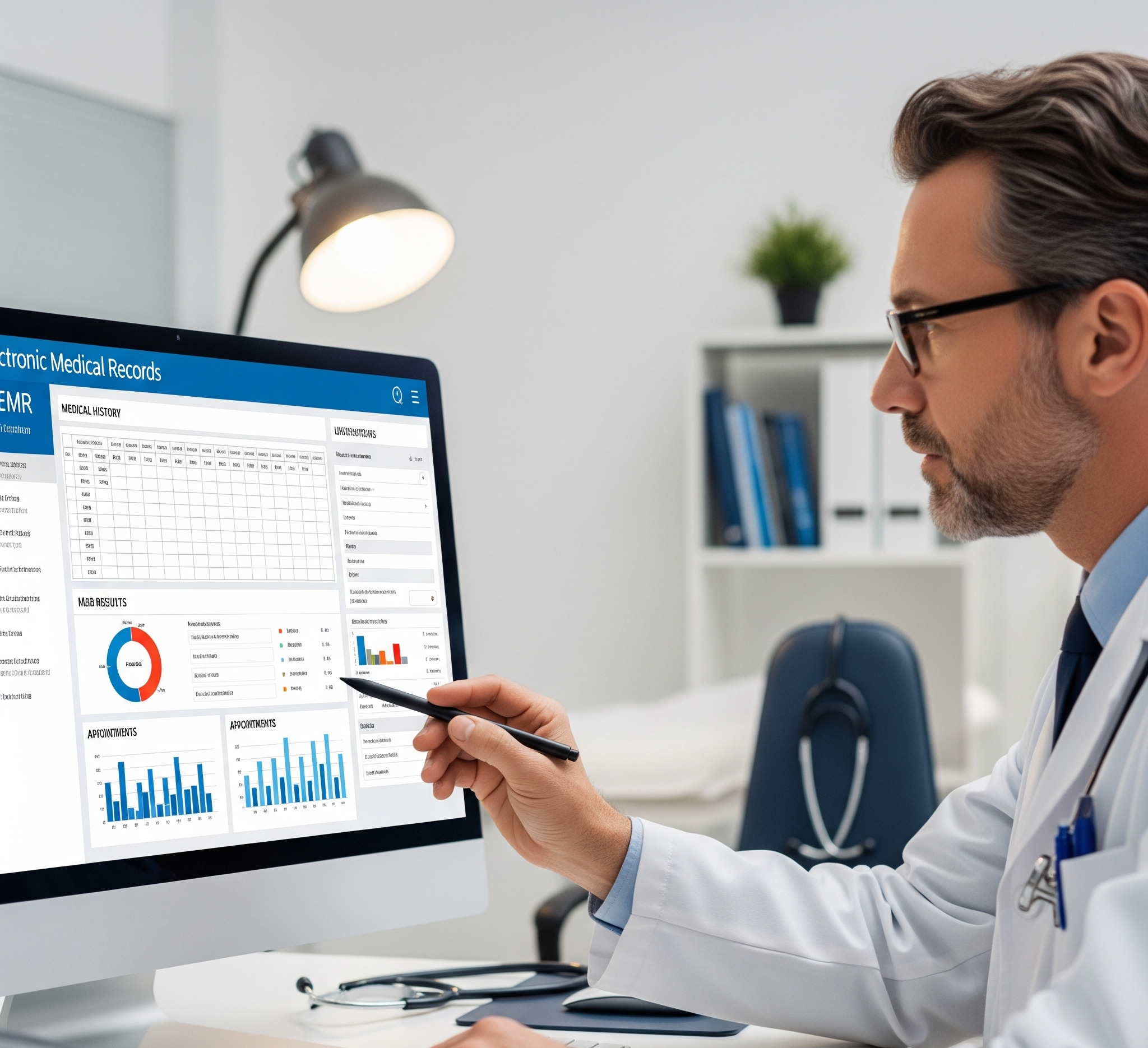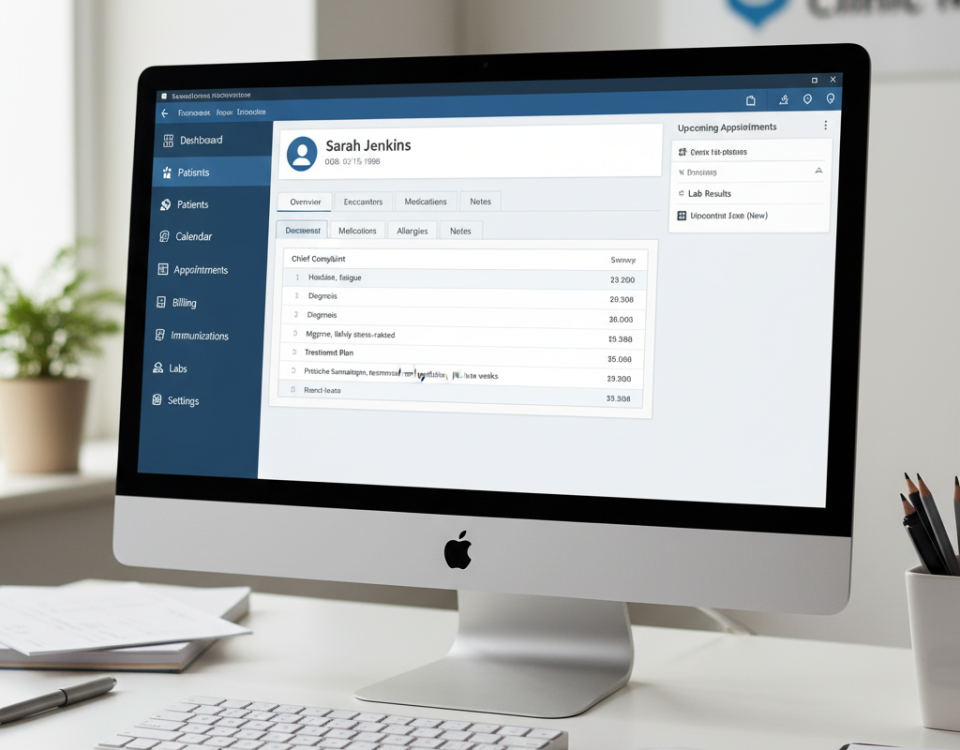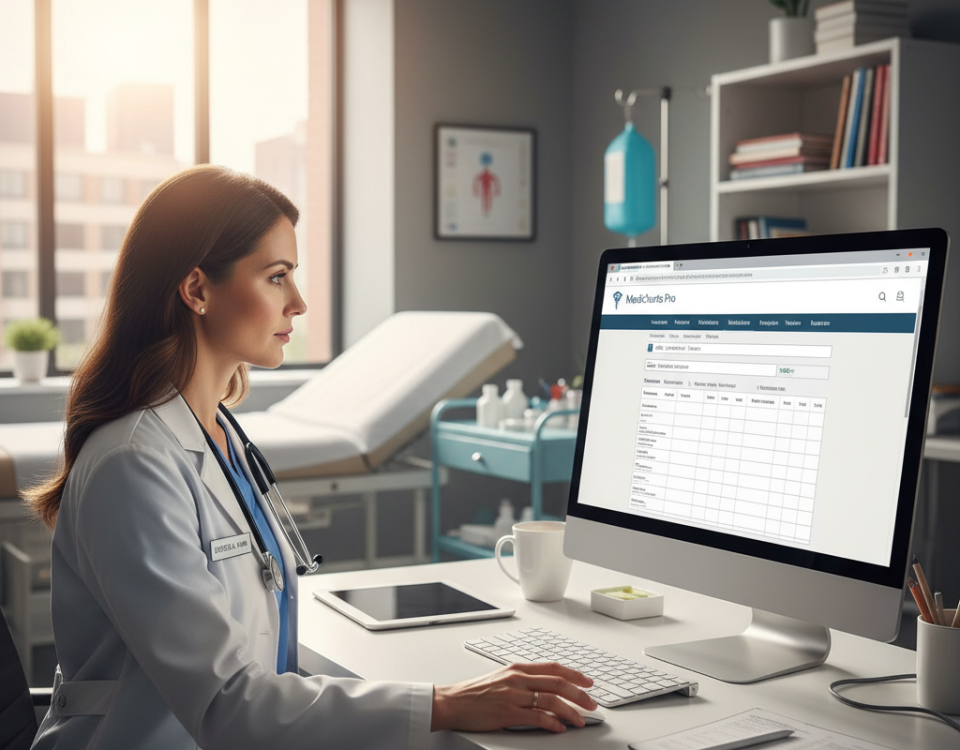- Home
- About Us
- EMR Features
-
-
- EMR Features
-
- Patient Health Features
-
- Clinic Features
-
-
- Specialties
-
- Blog
- Contact Us
5 Reasons to Replace Your Electronic Medical Record Software

Is the current EMR system actually helping clinics run smoothly or just getting in the way? Many organizations stick with outdated Electronic Medical Record Software, thinking it’s “good enough”—until daily frustrations pile up, workflow slows, and patient satisfaction dips. The right medical EMR system isn’t just a digital filing cabinet; it’s a tool that should boost efficiency, make billing a breeze, and keep records secure while giving frontline staff and providers more time for patients.
But stubbornly holding onto legacy EMR software often means putting up with unnecessary glitches, workarounds, and headaches. There’s real value in assessing whether change is overdue. Here are five signs it’s time to consider an upgrade or replacement.
1. The Current EMR System Lacks OHIP Billing Integration
The pace of healthcare in Ontario demands that every step—especially billing—operate seamlessly. When a medical EMR system doesn’t offer seamless OHIP billing integration, the result is frustration for everyone involved in claims and payments. Manual entry, double data entry, hunting through spreadsheets, and dealing with billing errors aren’t mere annoyances—they add up to wasted hours and lost revenue.
With modern EMR software built for clinics working with the Ontario Health Insurance Plan (OHIP), billing becomes part of the natural workflow. Claims are generated as part of the patient encounter, errors are flagged in real time, and reconciliation is easier. No need for add-on modules or switching between systems. For clinics seeking predictable cash flow, fewer rejected claims, and billing processes that take minutes instead of hours, integrated solutions can make a significant difference.
2. Poor User Experience for Staff and Providers
If providers and support staff grumble about logins, clunky navigation, or slow response times, there’s a problem. An old electronic medical record software can create bottlenecks at every stage: scheduling, note-taking, test ordering, and referrals. The result? Stress, burnout, and a mountain of sticky notes as workarounds.
Today’s best EMR software isn’t just user-friendly—it’s staff-centered. Simple layout, logical workflows, and customizable templates let each team work without friction. New staff and providers can learn the system quickly, and routine tasks require fewer steps—eliminating the frustration of navigating endless menus. In clinics where poor user experience is built into the system, inefficiency multiplies with every provider and admin. Upgrading to an intuitive medical EMR system makes daily work smoother and dramatically increases productivity and satisfaction for both patients and staff alike.
3. Limited Support for Multi-Provider and Multi-Location Clinics
Clinics are rarely static. Growth means adding new providers, multiple specialties, and even new locations. A limiting EMR system can quickly become the choke point. Many legacy medical EMR software packages were built for small, single-location practices and simply don’t handle more complex workflows or centralized administration.
Without robust support for multi-provider and multi-location operations, tasks like sharing appointments, synchronizing patient records, or analyzing clinic-wide data become a major headache. Scattered data, incomplete histories, risky gaps when transferring patients—these all stem from poor system design that doesn’t scale.
A modern electronic medical record software platform includes permissions management, data sharing between all providers, and location-based scheduling. With real scalability, clinics can add sites or specialties without IT nightmares, keeping all clinical information accessible and organized. Outgrowing old EMR software is not a “maybe”—it’s just a matter of time.
4. Outdated Compliance and Data Security Features
Healthcare data security requirements change almost as fast as the technology itself. Can the current EMR system confidently handle regulatory changes, ransomware threats, or new privacy standards? Many older electronic medical record software platforms rely on outdated encryption protocols, infrequent updates, or even unsupported operating systems—making them prime targets for breaches or compliance violations.
Modern EMR software is built with security as a top priority. Automatic updates, detailed audit trails, two-factor authentication, and alignment with both Ontario and international standards keep sensitive data safe. There’s no room for “that’s how we’ve always done it” when privacy and patient trust are at stake. Any gaps in compliance or security are not only costly—they can threaten the entire clinic’s reputation and operations.
5. No Integration with Patient Portals or Virtual Care Tools
Patients now expect online access to health records, appointment booking, and secure messaging with providers. When EMR software can’t integrate with patient portals or virtual care tools, clinics miss out on efficiency and fail to match the care patients increasingly want—especially in a post-pandemic world.
A true medical EMR system provides two-way integration with the tools patients use: mobile-friendly portals for scheduling, test results, and telemedicine appointments that link effortlessly with the primary EMR. This streamlines the entire care experience—from intake forms to follow-up messages—making the patient-provider relationship stronger and administrative work lighter. Integration isn’t a luxury—it’s essential for modern healthcare delivery that puts people first.
Is It Time for a Smarter EMR?
Hesitation to upgrade is understandable, but holding onto legacy electronic medical record software often costs clinics more than they realize—in time, revenue, and staff frustration. EMR system limitations around billing, usability, scalability, security, and patient engagement hold organizations back.
Alembico EMR offers a more innovative, cloud-based solution that seamlessly integrates billing, is built for teams of every size, prioritizes security, and centers on real clinical workflows—not just compliance checklists. If the current medical EMR system is adding friction rather than supporting clinical operations, it might be time to explore smarter, more flexible software options. Clinics can book a demo today with Alembico EMR and see how easy it is to switch to a better way to work.
Also read:
6 Common Mistakes to Avoid When Choosing an EMR System
Tags: EMR Ontario, EMR software, EMR Solution


